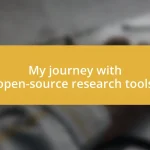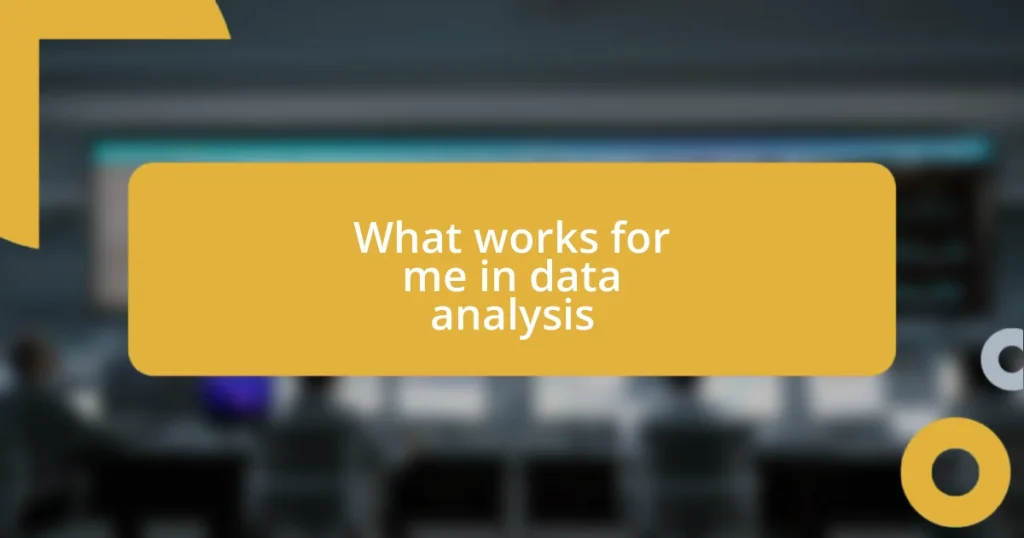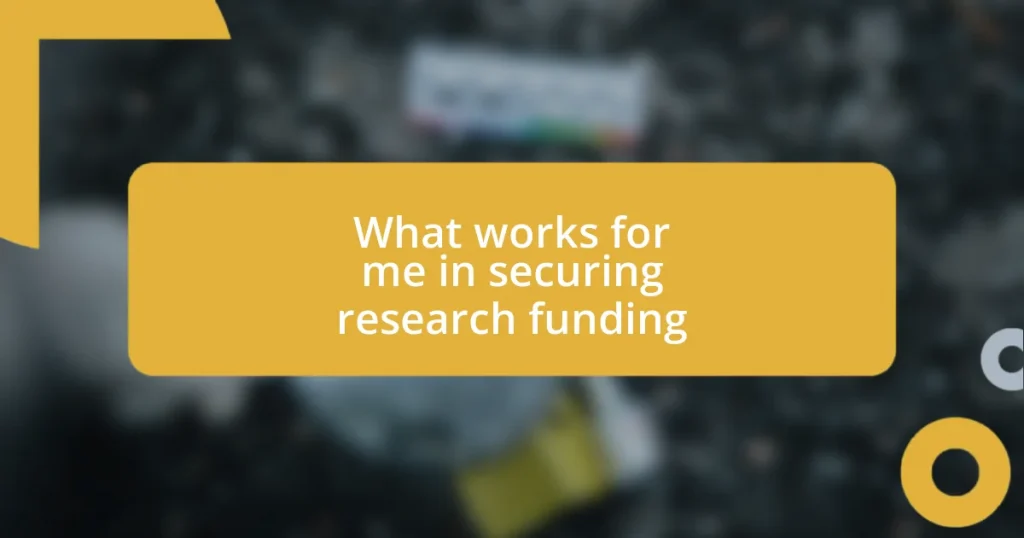Key takeaways:
- Understanding personal data analysis reveals emotional connections and insights about self-experience beyond mere trends.
- Effective data collection techniques, such as journaling and automated tools, enhance the depth and context of gathered information.
- Creating actionable steps from data insights and fostering collaboration is essential for driving meaningful change and improvement.
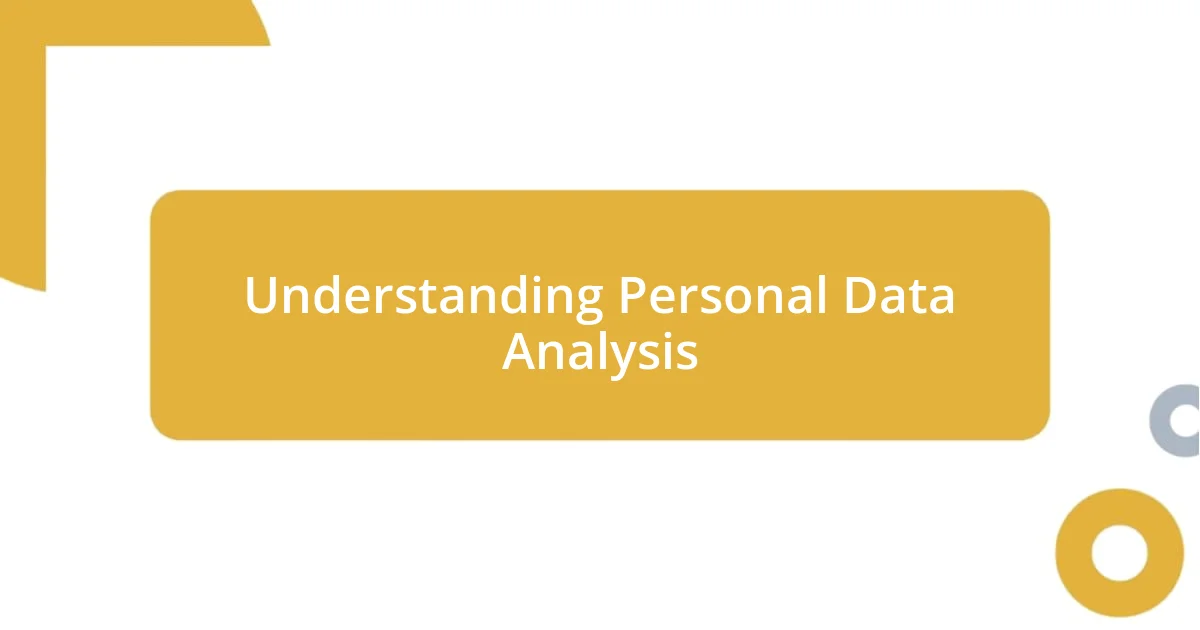
Understanding Personal Data Analysis
Understanding personal data analysis is like deciphering a unique puzzle that reflects my own life experiences. I remember the first time I dived deep into my spending habits; it was both enlightening and unsettling. I discovered patterns in my expenditures that I had been blissfully unaware of, prompting me to ask myself: what truly matters to me in my financial choices?
As I began to visualize my data, it became clear that numbers held stories behind them. For instance, tracking my fitness through personal performance metrics showed me not only my progress but also the emotional highs and lows I experienced during that journey. Have you ever noticed how a simple graph can evoke feelings of accomplishment or disappointment? That emotional connection transforms data analysis from a mundane task into a powerful tool of self-discovery.
I often find that the most impactful insights come from the smallest details. Analyzing my daily mood alongside my productivity levels, for instance, revealed nuances that I had never considered before. Sometimes, a particularly challenging day could be masked by an increase in output, leading me to question the true cost of my productivity. This process remains a constant reminder that understanding personal data analysis isn’t just about trends; it’s about recognizing the human experience behind the numbers.
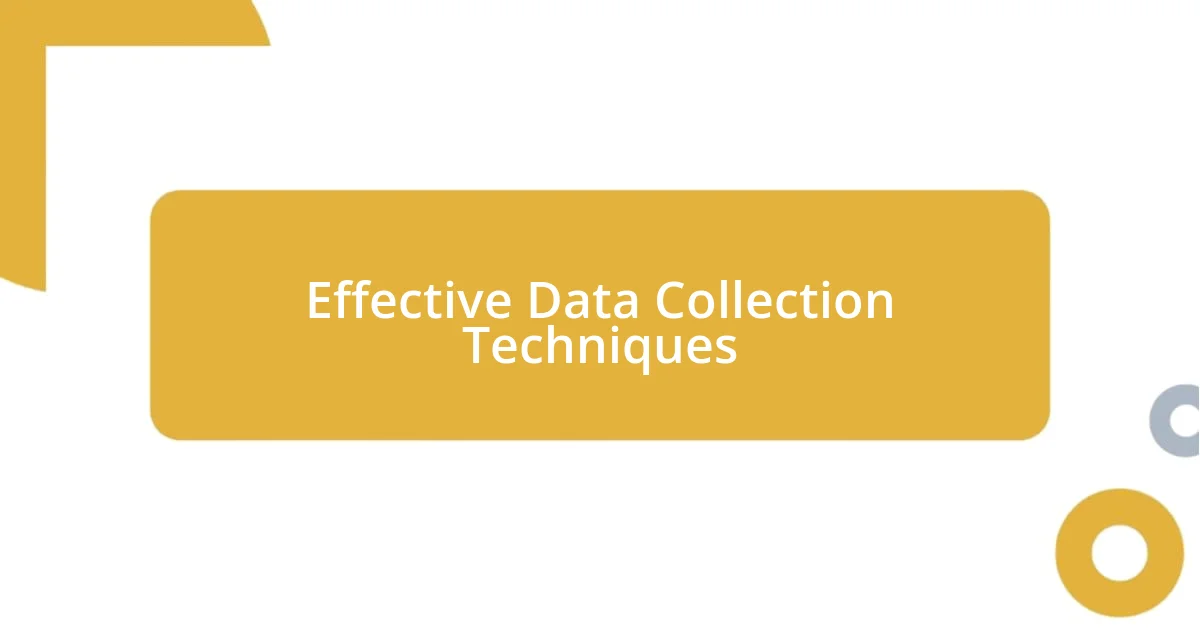
Effective Data Collection Techniques
When it comes to effective data collection techniques, I’ve always leaned toward methods that resonate with my personal experiences. One of my go-to strategies is keeping a detailed journal, where I jot down not only numerical data but also the context surrounding it. For example, while tracking my exercise routine, I would note how I felt that day – the energy levels, mood shifts, and even what I had for breakfast. This extra layer of detail has proven invaluable, as it often reveals correlations that pure numbers might miss.
- Surveys and Questionnaires: Gathering insights directly from people can provide rich, nuanced data.
- Automated Tracking Tools: I love using apps that automatically record my physical activity, which reduces the risk of human error.
- Observational Studies: Sometimes just watching behaviors in real-time can uncover patterns that aren’t captured through traditional means.
These techniques make data collection feel less like a chore and more like an engaging exploration of life’s intricacies. The stories behind the data are what truly transform my findings into meaningful insights.
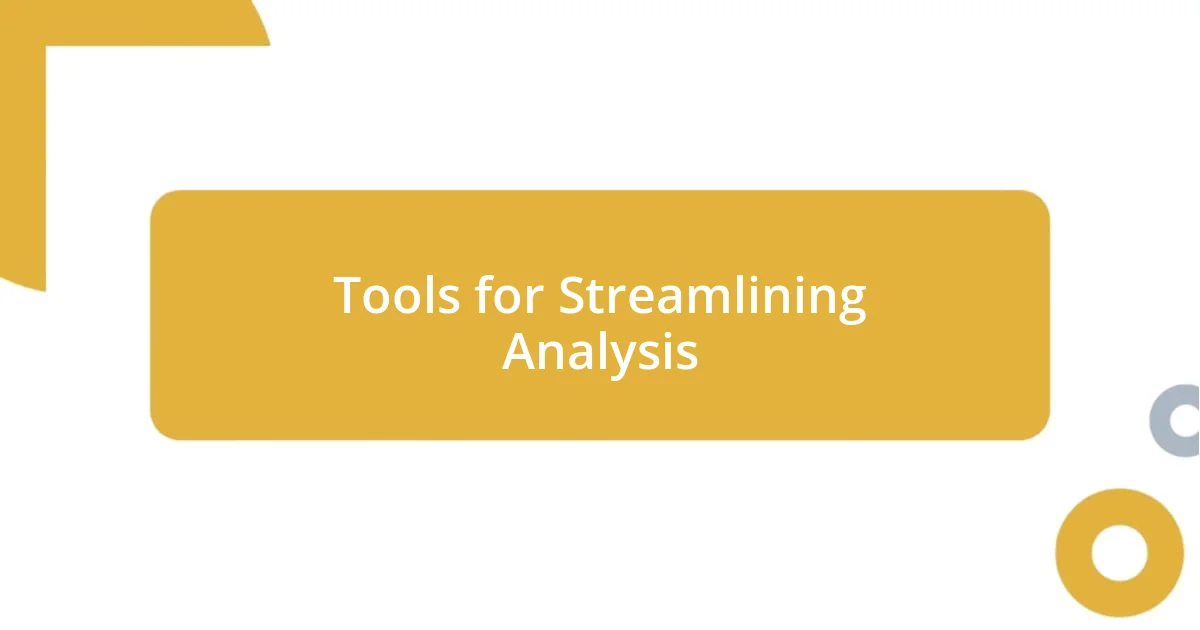
Tools for Streamlining Analysis
To streamline my data analysis, I’ve found that using the right tools can truly elevate the entire process. For instance, I often rely on spreadsheet software like Excel for its robust features. Have you ever played around with PivotTables? They allow me to summarize large datasets effortlessly, helping me identify trends at a glance. It’s quite satisfying to see complex information transformed into clear visuals in just a few clicks.
Data visualization tools like Tableau or Power BI have also been game-changers in my analytical work. They provide stunning graphics that can bring data to life, which I find incredibly motivating. I remember the first time I created a dashboard to track my health metrics—it felt like I was holding my wellness journey in my hands. The vibrant visuals not only made data easier to digest for others but also kept me engaged in my progress.
In addition, project management tools such as Trello help me streamline my workflow. By organizing tasks visually, I can keep track of each step in my analysis without feeling overwhelmed. I’ve noticed that when I get overwhelmed, analysis tends to suffer, so finding a way to make my tasks clear and manageable is essential for maintaining focus.
| Tool | Benefits |
|---|---|
| Excel | Effortless summarization and quick trend identification |
| Tableau/ Power BI | Creates stunning visuals that engage and motivate |
| Trello | Organizes tasks visually and reduces overwhelm |
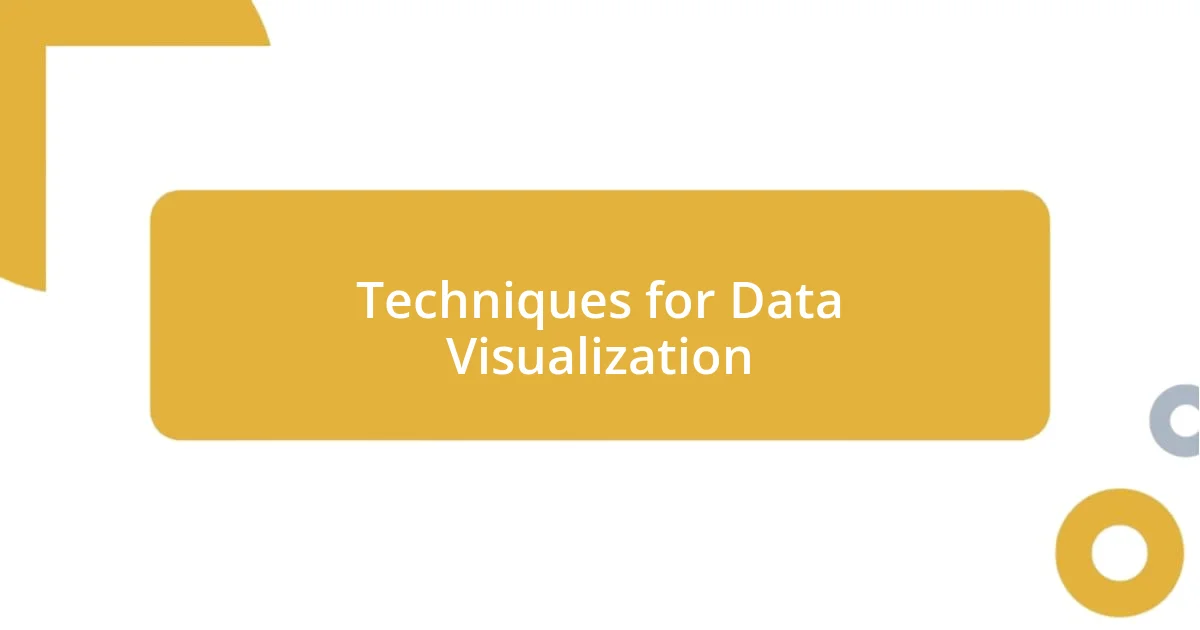
Techniques for Data Visualization
When it comes to data visualization, I often turn to storytelling techniques to convey my findings. For instance, I once visualized my spending habits with a simple pie chart. I was blown away by how much my daily coffee runs contributed to my overall expenses. That realization not only shocked me but also sparked a change in my habits. Doesn’t it feel powerful to see your data tell a story that you can connect with on a personal level?
Another technique I frequently use is color coding in my graphs. I find that choosing a color palette that resonates with me helps in categorizing data intuitively. When I created a bar graph comparing my workout routines, using warm colors for strength training and cool colors for cardio made it easier to interpret the information at a glance. Have you ever experimented with colors in your own visualizations? It’s fascinating how a simple color choice can make the data more engaging and meaningful.
Finally, I love incorporating interactivity in my visualizations whenever possible. For example, I once created a dynamic dashboard that allowed me to filter my health metrics by different time frames. This level of engagement added an extra layer of exploration to my analysis, making it feel less like data and more like a personal journey. Just think about it—how empowering is it to control the narrative of your own data? Each technique I employ not only improves clarity but also deepens my connection to the information.
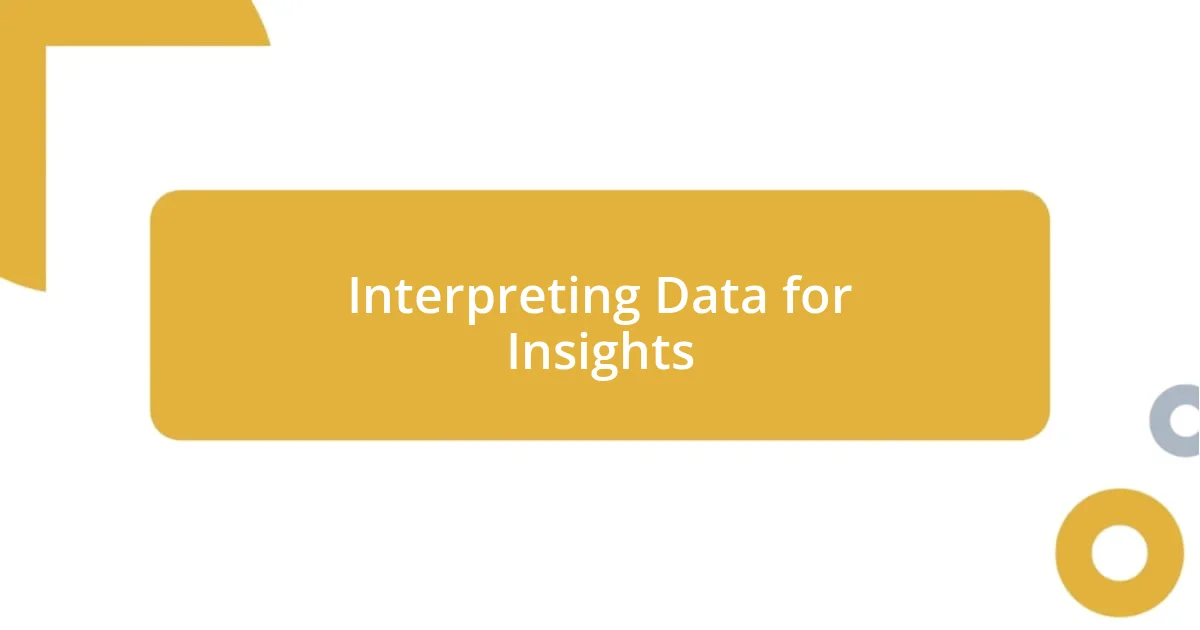
Interpreting Data for Insights
Interpreting data effectively can feel like uncovering hidden treasures. I recall a project where I analyzed customer feedback trends over several months. Initially, the sheer volume of comments felt overwhelming, but when I grouped similar sentiments, patterns started to emerge. It was a revelation to see how certain products consistently sparked joy or frustration. Have you ever had that lightbulb moment when the data finally clicks? It’s such a gratifying experience.
I also find that asking the right questions can transform my analysis. Instead of simply staring at the numbers, I often think, “What story is this data trying to tell me?” For example, during a quarterly analysis of sales trends, I focused not just on the ‘what’ but on the ‘why’—why did sales spike in certain regions? This approach led me to conduct mini-interviews with local teams, which provided context that raw numbers couldn’t convey. It’s fascinating how human insights can amplify data interpretations.
Another critical aspect I’ve learned is to remain open-minded throughout the process. Sometimes, the insights I gain are not what I expected. I remember exploring user engagement data on a website redesign, anticipating improvements, yet discovering that some user segments actually felt alienated. This unexpected insight pushed me to reconsider design choices. How often do we ignore counterintuitive results? Embracing those moments can lead to profound learning and, ultimately, better decision-making.
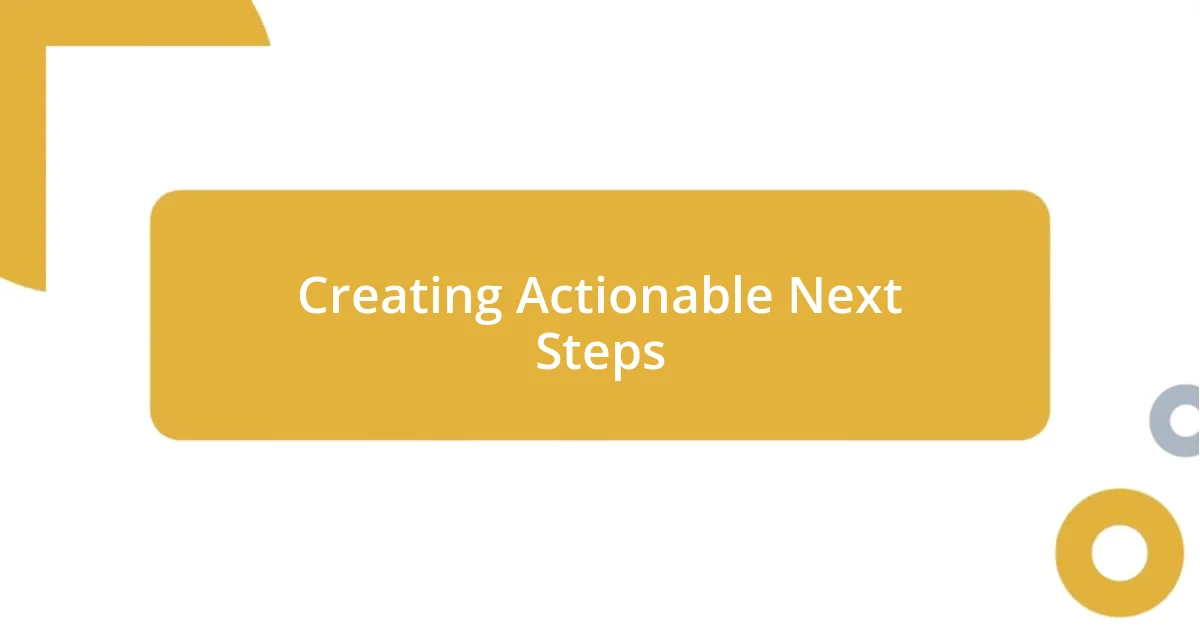
Creating Actionable Next Steps
Creating actionable next steps is all about translating insights into tangible actions. For me, after identifying trends in data, I’ve learned to prioritize them based on potential impact. I once highlighted a significant drop in customer satisfaction and quickly devised a strategy to address it. This led to the implementation of a new feedback loop, allowing us to adapt and respond in real-time. Isn’t it amazing how a well-defined action step can steer entire projects back on track?
I also believe that setting specific, measurable goals is essential for creating actionable next steps. When I analyzed employee productivity metrics and found a correlation between flexible work hours and output, I didn’t stop at the analysis. Instead, I proposed a pilot program for flexible scheduling, with clear metrics to gauge its effectiveness. This approach of measuring progress and being able to adapt as needed has made all the difference for my team. How often do we forget that a single metric can lead to broader changes?
Finally, leveraging collaboration is crucial in this process. After I gathered insights about market sentiments from our recent campaign, I realized the next step was not just my responsibility. Engaging stakeholders to brainstorm solutions fostered a sense of ownership and accountability. I recall how a collaborative meeting led to innovative ideas that I hadn’t considered alone. It’s exciting to see how teamwork can elevate even the simplest insights into actionable strategies. Isn’t it powerful when everyone contributes to a common goal?
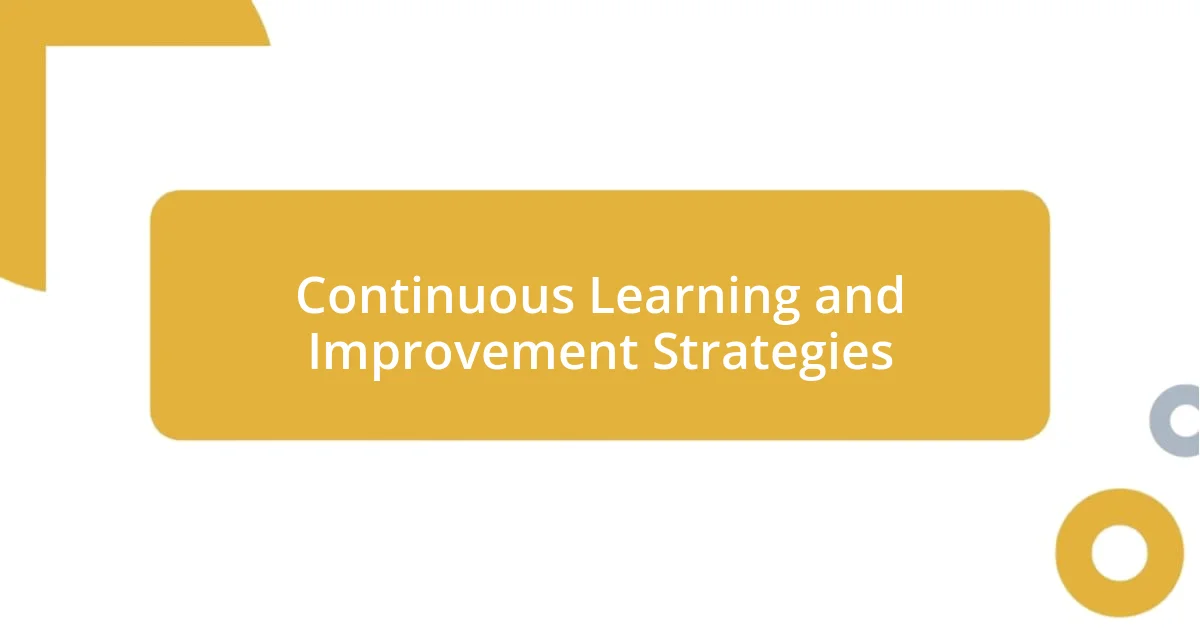
Continuous Learning and Improvement Strategies
Continuous learning is a cornerstone of effective data analysis, and I’ve found that actively seeking feedback is one of the most valuable strategies. For instance, after presenting a data-driven project to my team, I make it a point to ask for their thoughts on my approach. This open dialogue not only highlights areas for improvement but often sparks new ideas I hadn’t considered. Have you ever been surprised by the suggestions of those around you? I know I have.
In addition to feedback, I prioritize staying updated with the latest tools and methodologies in data analysis. I recall when I first learned about machine learning algorithms. It felt daunting, but through online courses and community forums, I gradually built my understanding. This not only enhancing my analytical skills but also opened up innovative ways to approach problems. Don’t you think that investing time in learning can yield unexpected dividends in our work?
Finally, I believe in the power of reflection. After completing a project, I take time to evaluate what worked and what didn’t. I once spent an afternoon reviewing an entire semester’s worth of sales data and realized that a few mistakes in initial assumptions had significantly impacted our conclusions. This reflective practice helps me refine my methodologies and strengthens my analytical framework for future projects. How often do we pause to learn from our experiences? Taking that moment can truly make a difference.





